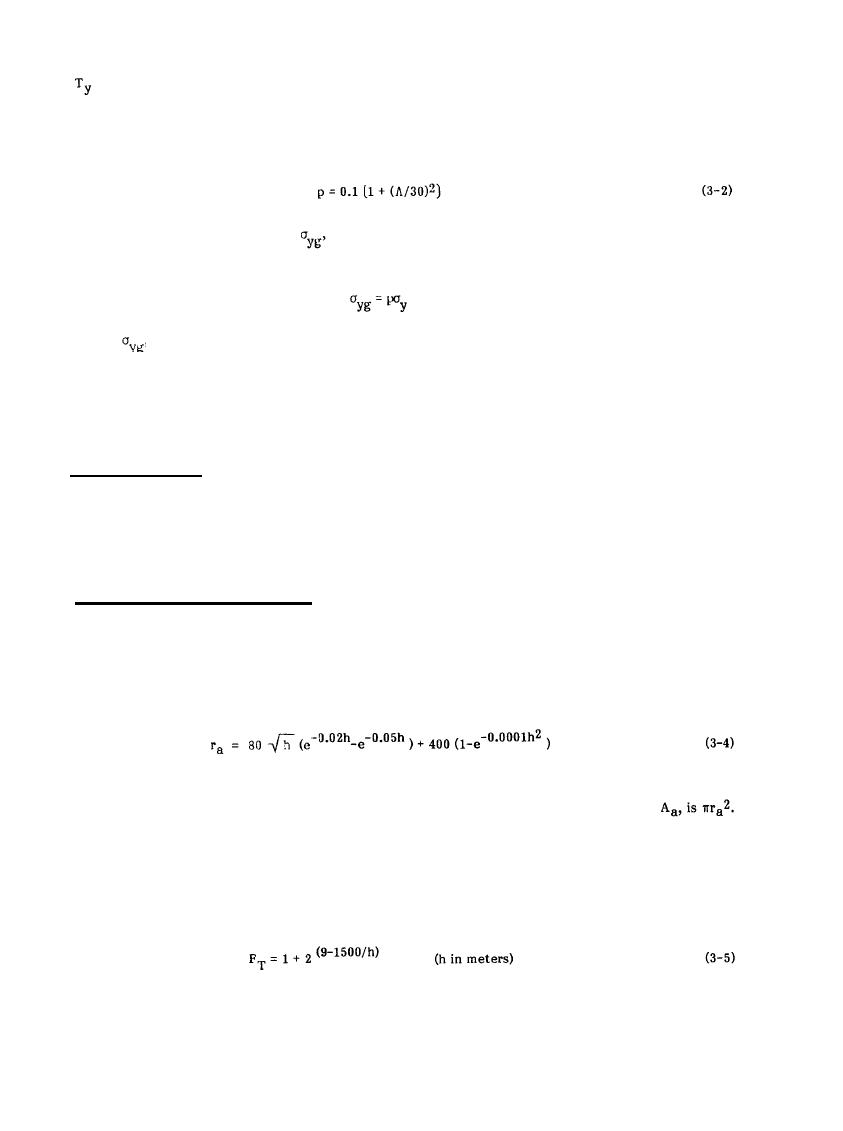

Custom Search
|
|

|
||
 MIL-HDBK-419A
where
is the number of thunderstorm days per year. Out of the total number of flashes per unit area, the
number of, discharges increases with increasing geographical latitude (3-7). The proportion, p, of discharges
that go to ground in relation to the geographical latitude, A, can be represented (3-8) as:
i.e., the number of discharges to earth per square kilometer per
Thus in a given location the flash density,
year, is:
(3-3)
for a specific location, first determine Ty from the isokeraunic map of Figure 3-2 to
To calculate
Figure 3-3. For estimation purposes, the number of thunderstorm days at points between lines may be
determined by interpolation. Using this value of Ty, calculate the total flash density with Equation 3-1. Next
obtain the geographical latitude of the site from a map of the area and calculate p from Equation 3-2. Then
determine the number of strikes to earth per year per square kilometer with Equation 3-3.
3.5 ATTRACTIVE AREA. The concept of attractive area reflects the principle that an object extending
above its surroundings is more likely to be struck by lightning than its actual cross-sectional area might
otherwise indicate. For example, thin metallic structures such as flag poles, lighting towers, antennas, and
overhead wires offer a very small cross-sectional area relative to the surrounding terrain but ample evidence
exists to show that such objects apparently attract lightning.
3.5.1 Structures Less Than 100 Meters High.
For structures less than 100 meters (330 feet) in height, and which therefore do not normally trigger lightning,
the number of strikes increases according to a power of h, the structure height. An expression that represents
the attractive radius, ra, in meters of a structure is (3-5);
where h is in meters. For a structure 10 meters high, Equation 3-4 given an attractive radius of 57.7 meters;
similarly, the attractive radius for a 100-meter high structure is 356 meters. The attractive area,
Thus A, for a lo-meter structure is approximately 0.01 square kilometer, while the attractive area of a
100-meter structure is 0.4 square kilometer.
Equation 3-4 has been found to adequately describe the number of strikes to objects which are not tall enough
to trigger lightning. For taller structures, a multiplication factor (3-5)
3-10
|
 
|
|
 |
||